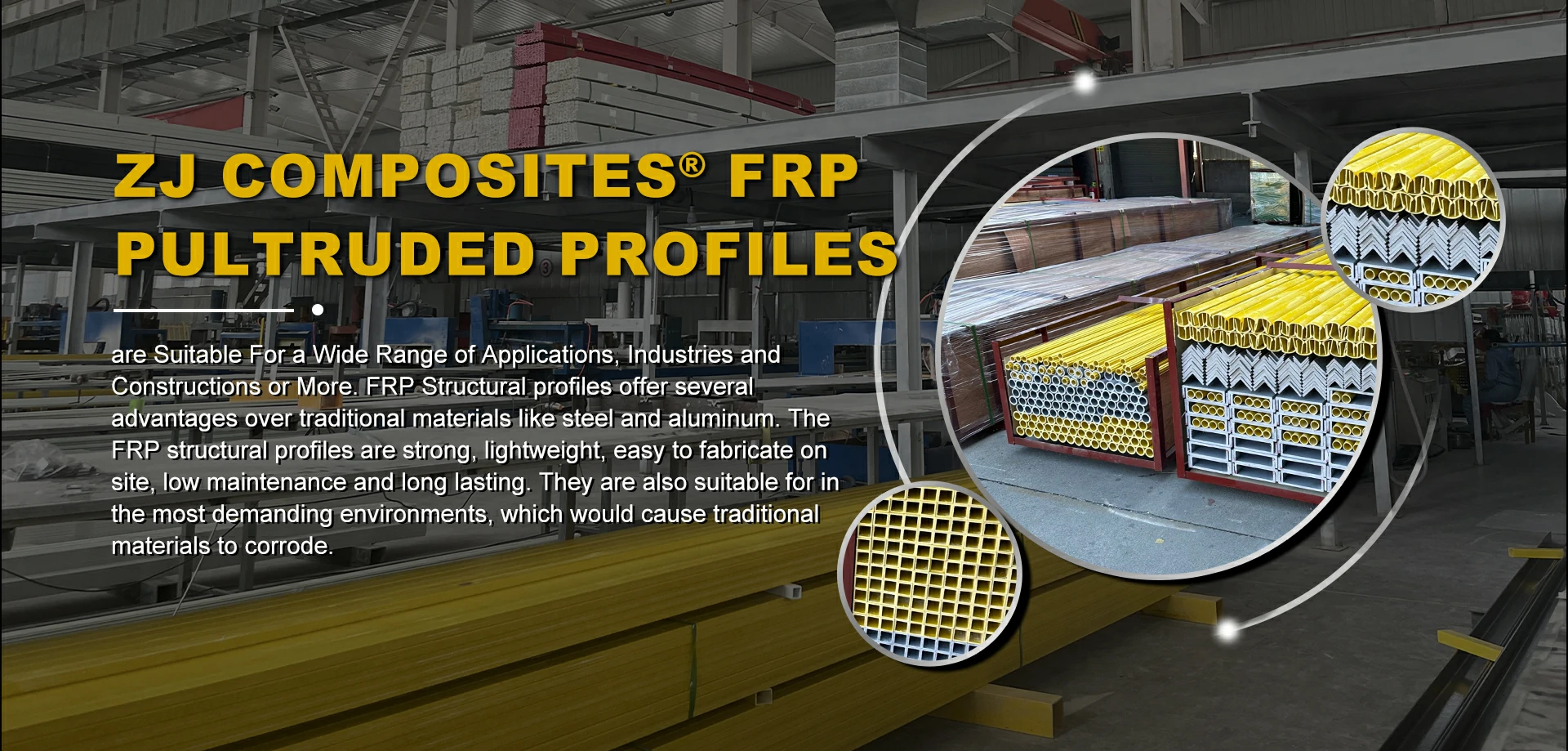loading...
- No. 9, Xingyuan South Street, Dongwaihuan Road, Zaoqiang County, Hengshui, Hebei, China
- admin@zjcomposites.com
- +86 15097380338
- Welcome to visit our website!
frp bar
Understanding FRP Bar A Revolutionary Material in Construction
The construction industry is continuously evolving, seeking innovative materials to improve the strength, durability, and longevity of structures. One such advancement is the use of Fiber Reinforced Polymer (FRP) bars. These composite materials are transforming the landscape of construction, particularly in situations where traditional materials, like steel, may fall short in performance or practicality.
What is FRP?
FRP, or Fiber Reinforced Polymer, is a composite material composed of a polymer matrix reinforced with fibers, typically made from glass, carbon, or aramid. The combination of these materials results in a product that is lightweight yet incredibly strong, resistant to corrosion, and capable of withstanding harsh environmental conditions. FRP bars are primarily used as reinforcement in concrete, effectively replacing the traditional steel rebar.
Advantages of FRP Bars
One of the most significant advantages of FRP bars is their resistance to corrosion. Unlike steel, which can degrade over time due to exposure to moisture, salt, and chemicals, FRP exhibits excellent chemical resistance. This property makes FRP bars ideal for use in environments such as marine structures, wastewater treatment facilities, and bridges in coastal areas where de-icing salts are commonly applied.
Moreover, FRP bars are lighter than steel, significantly reducing the weight of the overall structure. This lightweight nature not only eases the handling and installation processes but also has implications for transportation costs and labor requirements. Construction projects can become more efficient, cutting down on both time and expenses.
Another remarkable feature of FRP bars is their non-magnetic properties. This characteristic is particularly valuable in applications where electromagnetic interference is a concern, such as in hospitals or laboratories. The absence of any magnetic properties also makes FRP ideal for applications in high-tech industries, where precision and safety are paramount.
frp bar

Applications of FRP Bars
The versatility of FRP bars lends them to a wide array of applications. They are increasingly being used in the construction of bridges, parking garages, and even residential buildings. Their ability to withstand extreme weather conditions makes them a suitable choice for regions prone to natural disasters like hurricanes or earthquakes. Engineers are also utilizing FRP bars in the retrofitting of existing structures, providing additional strength and extending their lifespan.
Moreover, FRP technology plays a significant role in the development of smart structures. With advancements in sensors and monitoring systems embedded into FRP, real-time data on structural health can be obtained. This integration enhances safety measures and preventative maintenance practices, ensuring that structures remain safe for use throughout their lifespan.
Challenges and Considerations
Despite their numerous advantages, the use of FRP bars is not without challenges. One significant concern is the cost, as FRP materials can be more expensive than traditional steel. While the initial investment may be higher, the long-term savings associated with reduced maintenance and longevity often justify the expense.
Additionally, the bond between FRP bars and concrete can be different from that of steel, which requires careful consideration during design and installation. Engineers must ensure that the right specifications are met to maximize the performance of FRP in various applications.
Conclusion
As the construction industry continues to seek ways to improve safety, sustainability, and efficiency, FRP bars stand out as a powerful solution. Their unique properties, including corrosion resistance, lightweight nature, and adaptability to various environments, make them an excellent choice for modern construction projects. While challenges exist, the benefits often outweigh the drawbacks, leading to an increased adoption of FRP technology in the field. As innovation continues, we can anticipate even broader uses of FRP materials, potentially reshaping the standards of engineering and construction for years to come.
-
The Rise of FRP Profiles: Strong, Lightweight, and Built to LastNewsJul.14,2025
-
SMC Panel Tanks: A Modern Water Storage Solution for All EnvironmentsNewsJul.14,2025
-
GRP Grating: A Modern Solution for Safe and Durable Access SystemsNewsJul.14,2025
-
Galvanized Steel Water Tanks: Durable, Reliable, and Ready for UseNewsJul.14,2025
-
FRP Mini Mesh Grating: The Safer, Smarter Flooring SolutionNewsJul.14,2025
-
Exploring FRP Vessels: Durable Solutions for Modern Fluid HandlingNewsJul.14,2025
-
GRP Structures: The Future of Lightweight, High-Performance EngineeringNewsJun.20,2025
